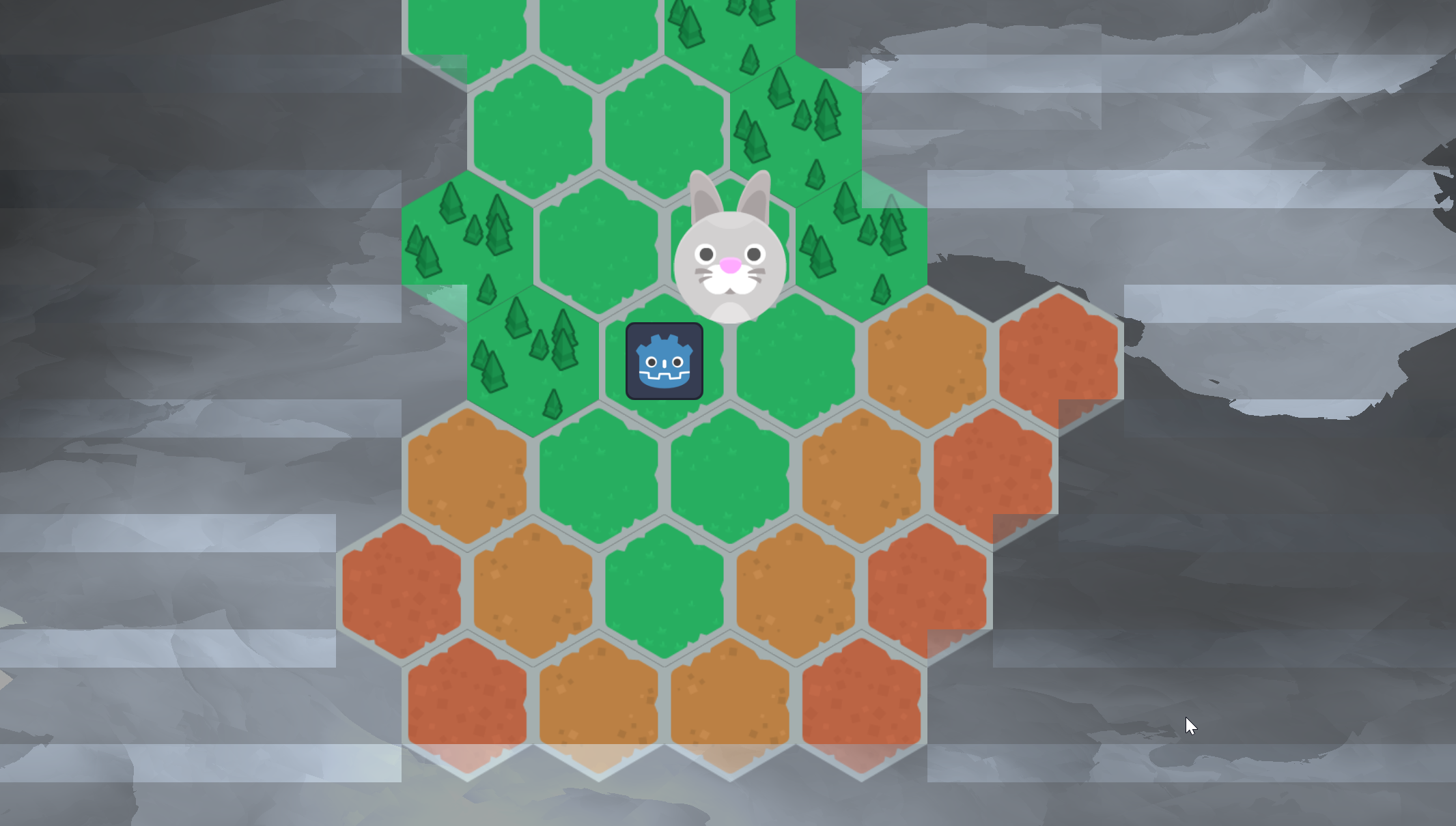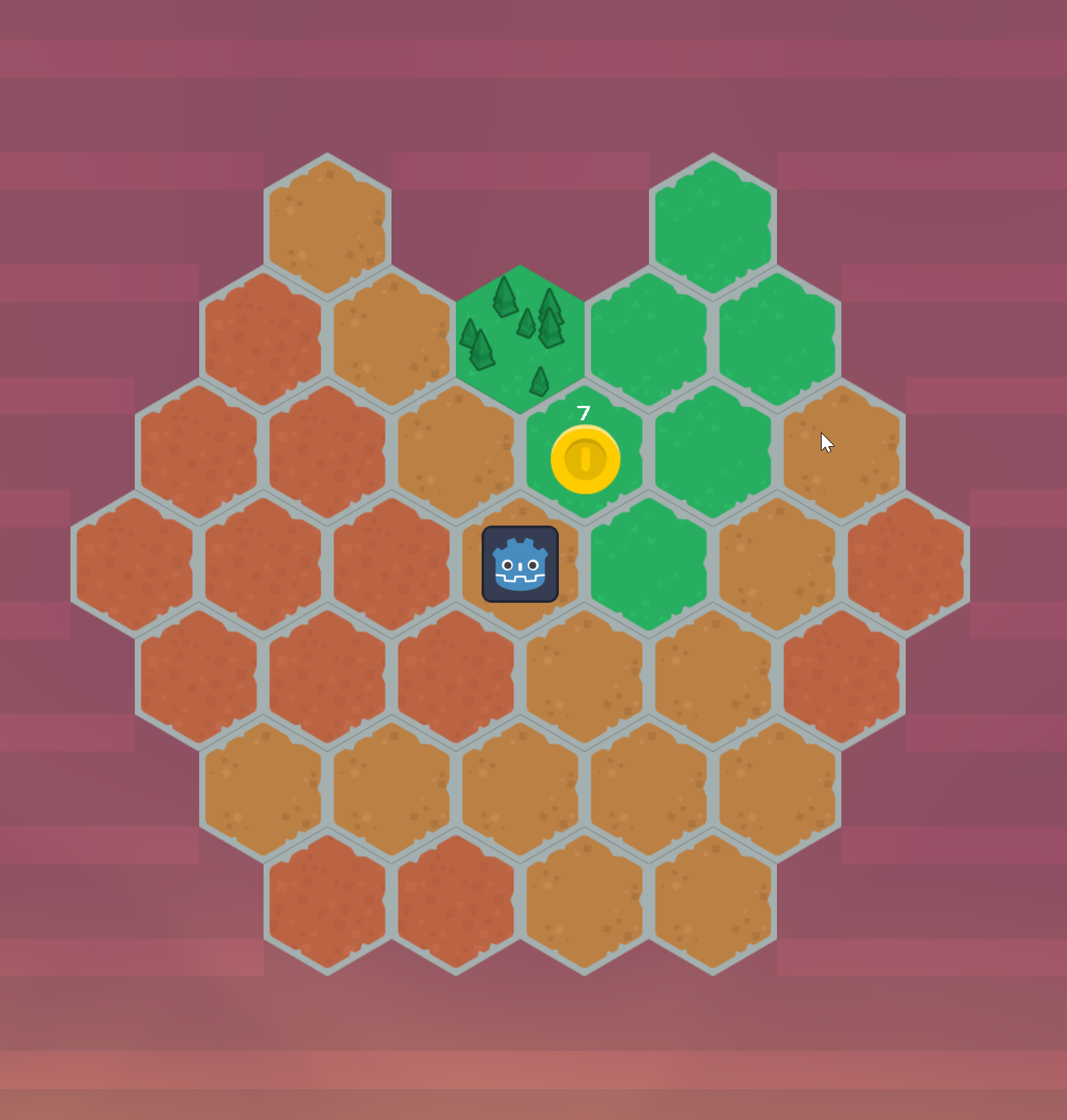- Edited
Determine field of view 
Set fogTile.material to a shader material 
Hide tile by setting atlas coord to fog tile 
# cc is cube coordinates from https://www.redblobgames.com/grids/hexagons/
# am is subclass of TileMapLayer.
func hide(cc: Cc):
am.set_cell(cc.toOffset(), tileSourceId, fogAtlasCoords)
func reveal(cc: Cc):
am.set_cell(cc.toOffset(), tileSourceId, am.getCell(cc).ogAtlasCoords)Result: great but overlapping lines in fog from shader rendering twice

I've tried messing with Y Sort Origin and Rendering Quadrant Size


